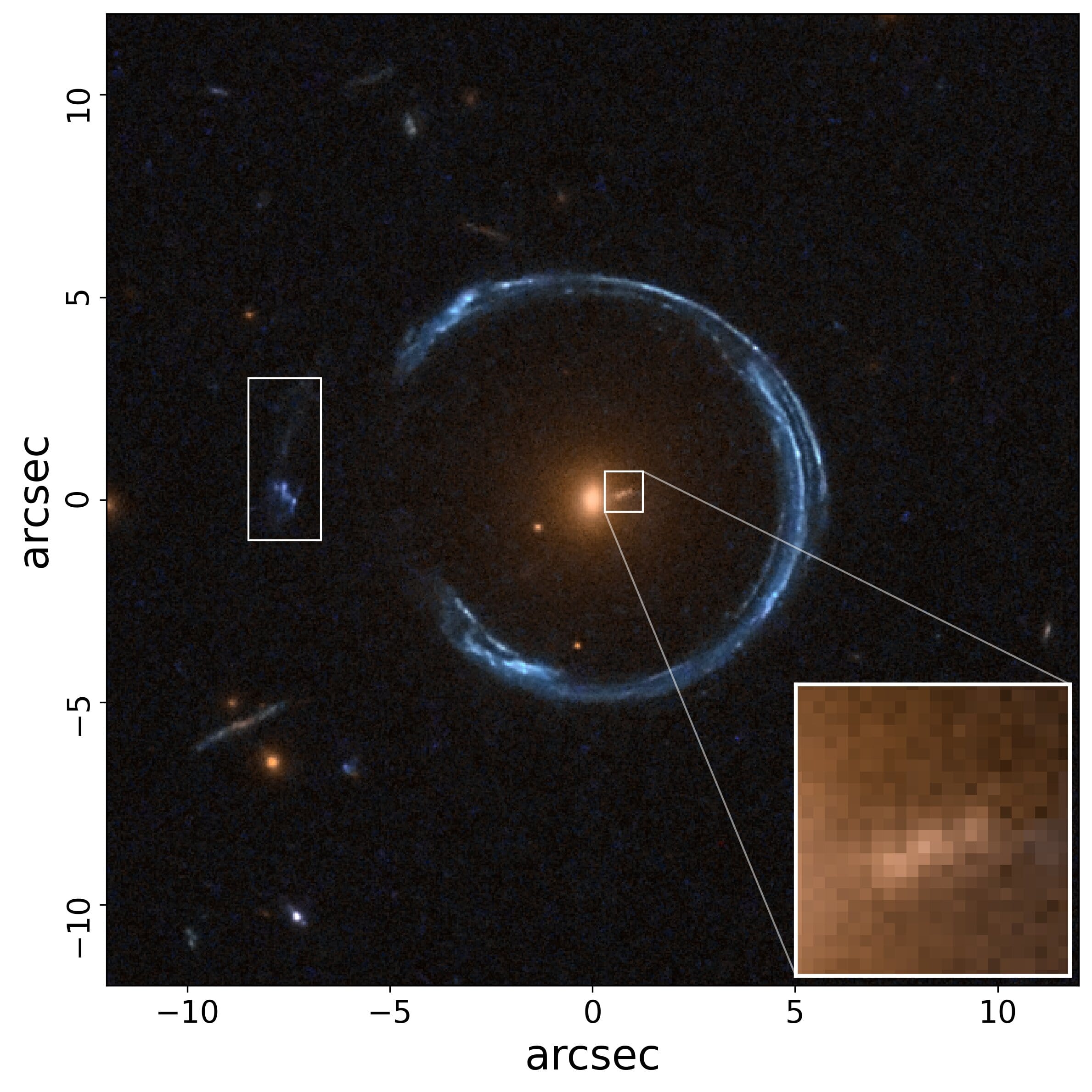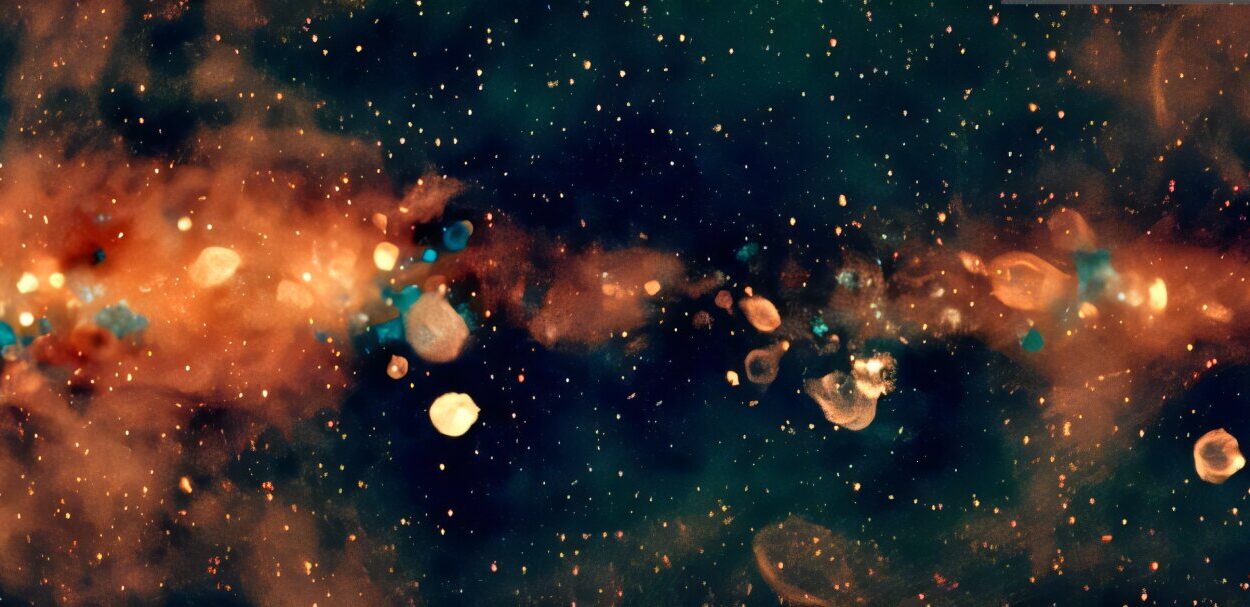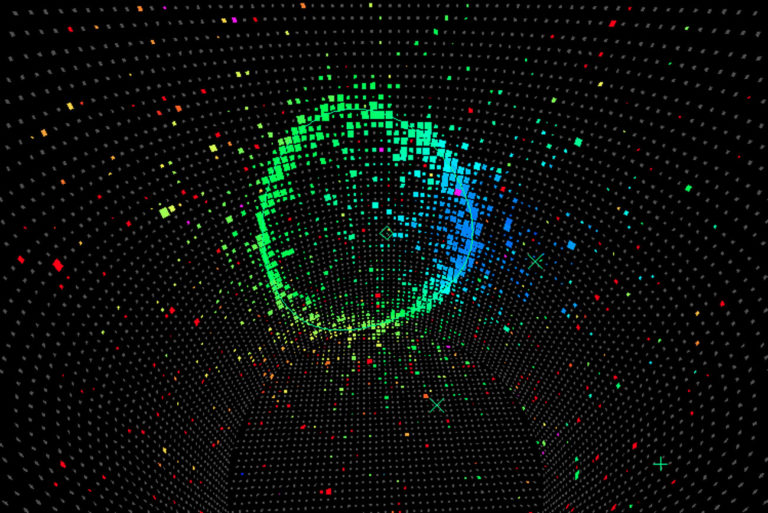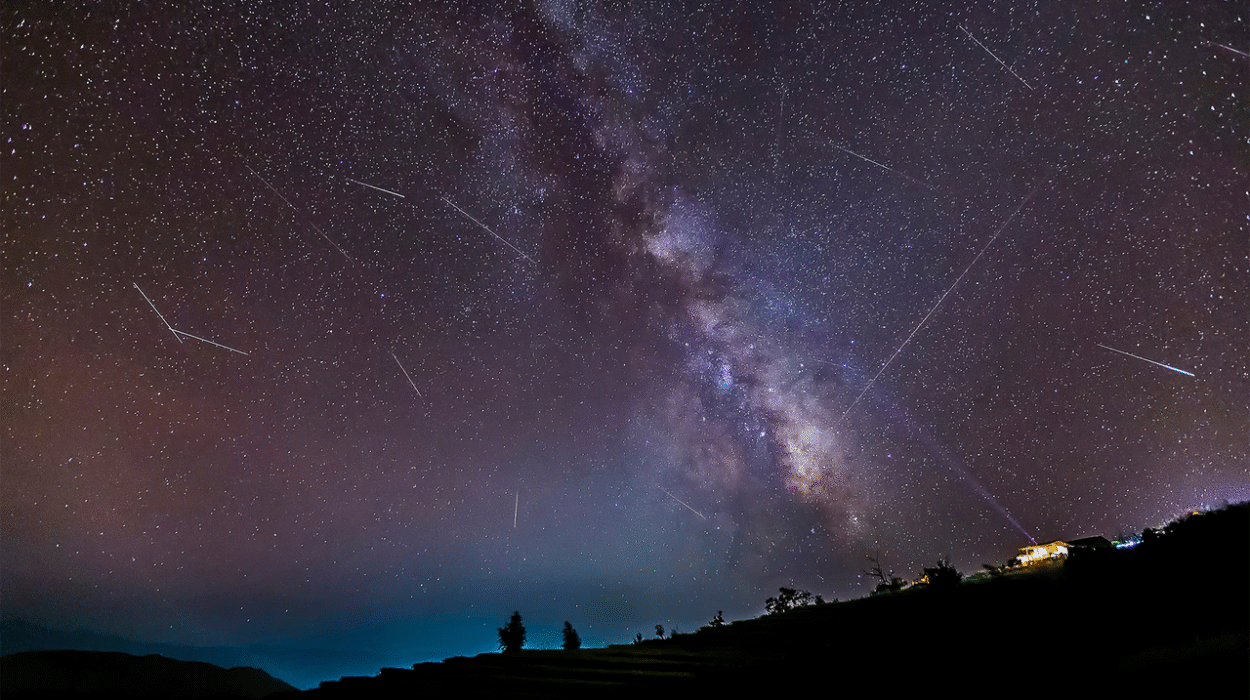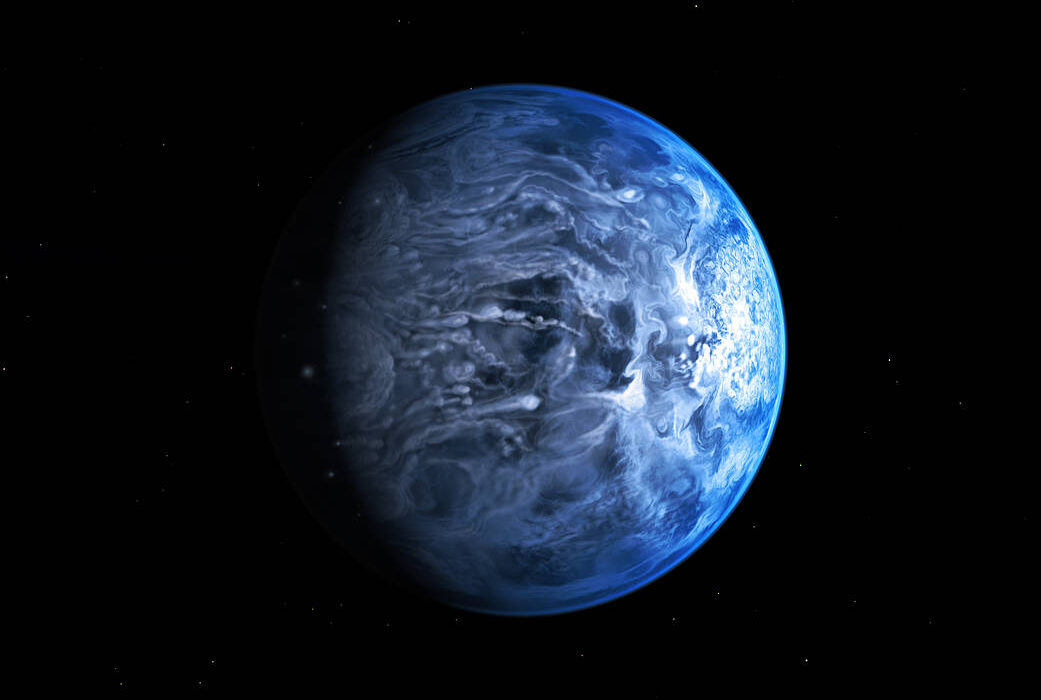It doesn’t blaze like a quasar or devour matter in a frenzy of light. It makes no announcement of its presence. It simply exists—colossal, still, and impossibly heavy. Hidden deep within a gargantuan galaxy known as the Cosmic Horseshoe, astronomers have discovered what may be the most massive black hole ever detected. Weighing in at an astonishing 36 billion times the mass of our Sun, this sleeping titan defies our expectations and pushes the known limits of cosmic size and structure.
The discovery, published in the Monthly Notices of the Royal Astronomical Society, is more than just a new number in the cosmic ledger. It is a profound glimpse into the hidden architecture of the universe, a place where gravity reigns supreme, and where time, space, and matter collapse into singularity.
A Galaxy So Massive It Bends Light Itself
The Cosmic Horseshoe galaxy, located some 5 billion light-years from Earth, is a celestial leviathan in its own right. It gets its poetic name from the rare and striking optical illusion it creates—a horseshoe-shaped arc of light wrapped around it like a glowing halo. This isn’t some trick of light and shadow. It’s gravitational lensing, a phenomenon predicted by Albert Einstein’s theory of general relativity.
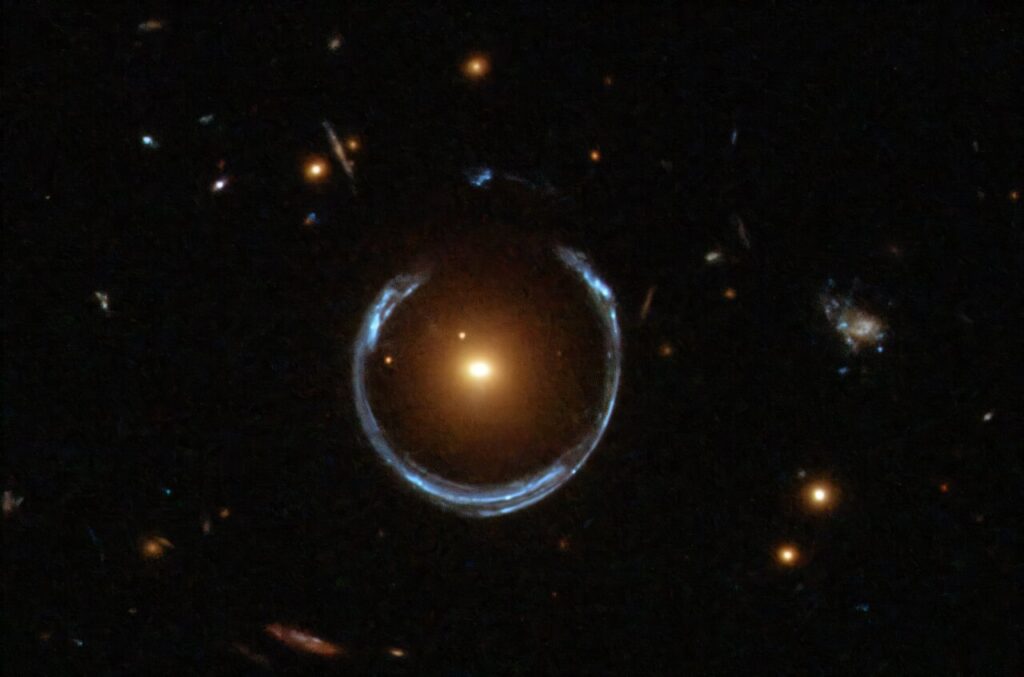
In this phenomenon, the massive galaxy distorts the very fabric of spacetime, bending and magnifying the light of a more distant background galaxy into a curved shape—an Einstein ring. That warped light isn’t just beautiful; it’s also incredibly useful. It offers astronomers a kind of natural telescope, allowing them to peer deeper into the cosmos and study hidden forces that would otherwise remain invisible.
And in this case, that force turned out to be a dormant ultramassive black hole—a cosmic anomaly so heavy that it challenges the upper limits of black hole formation.
Weighing the Unseeable
Black holes, by their very nature, do not emit light. We cannot see them directly. So how can we measure something that hides in darkness? For decades, astronomers have relied on indirect methods—tracking the way light flickers as matter falls into the hole, for example, or analyzing the jets and radiation from active galactic nuclei. But these estimates are often filled with uncertainties, especially for black holes located billions of light-years away.
This time, researchers took a different route. Using a combination of gravitational lensing and stellar kinematics—the precise study of how stars move—they were able to build an accurate map of the galaxy’s mass distribution.
As stars near the black hole are pulled into faster orbits, their motion becomes a clue to the black hole’s gravitational influence. “We detected the effect of the black hole in two ways,” explains Professor Thomas Collett from the University of Portsmouth. “It is altering the path that light takes as it travels past the black hole, and it is causing the stars in the inner regions of its host galaxy to move extremely quickly—almost 400 kilometers per second.”
The combination of these two observations provided not only compelling evidence of the black hole’s existence, but a confident estimate of its immense size.
A Dormant Power, Waiting in Silence
What makes this discovery even more extraordinary is that the black hole is dormant. It’s not currently devouring matter or lighting up its galaxy with radiation. It lurks in silence, revealed only by its gravitational pull on the surrounding stars and light. This sets it apart from most other massive black holes studied in the distant universe, which are usually active quasars, blazing brightly as they feed on gas and dust.
“This discovery was made for a dormant black hole,” says Carlos Melo, lead author and Ph.D. researcher at the Universidade Federal do Rio Grande do Sul in Brazil. “Its detection relied purely on its immense gravitational pull and the effect it has on its surroundings.”
That’s the breakthrough: with this new method, astronomers can now uncover silent giants across the universe—black holes that would otherwise escape notice simply because they are not currently consuming material.
The End State of Galaxy and Black Hole Formation
The Cosmic Horseshoe is not an ordinary galaxy. It’s part of what astronomers call a fossil group—the evolutionary endpoint of galaxy clusters. Over cosmic time, many galaxies within a cluster may collide and merge into a single, massive elliptical galaxy. When that happens, their central black holes also merge, coalescing into a supermassive or ultramassive black hole at the heart of the resulting structure.
Professor Collett explains, “It is likely that all of the supermassive black holes that were originally in the companion galaxies have now merged to form the ultramassive black hole that we have detected. So we’re seeing the end state of galaxy formation and the end state of black hole formation.”
In other words, this single object could be the gravitational graveyard of a hundred galaxies, all their central black holes consumed into one final colossus.
What It Means for the Future of Our Own Galaxy
The Milky Way, by comparison, is home to a relatively modest supermassive black hole—Sagittarius A*—weighing about 4 million solar masses. But galaxies grow. They collide. They merge. And so do their black holes.
Our galaxy is on a slow, spiraling collision course with the Andromeda galaxy, and in about 4.5 billion years, the two will merge into a new elliptical galaxy, sometimes called Milkomeda. When that happens, the black holes at the centers of each galaxy are expected to find each other, orbit, and eventually merge into a far more massive black hole. It may even become a quasar for a time, shining with terrifying brilliance.
The Cosmic Horseshoe’s black hole could be a glimpse into that future—a monument to what happens when galaxies die, collide, and coalesce.
A New Way of Seeing the Unseen
Black holes remain among the most fascinating and enigmatic objects in astrophysics. They represent the point where our understanding of physics breaks down, where density becomes infinite, and where space and time bend beyond comprehension. They raise profound questions about information, entropy, and the very fabric of reality.
What this discovery demonstrates is that we are now entering an age where we don’t need black holes to shout in X-rays or radio waves to find them. We can detect them by their quiet gravity—by how they bend light and stir stars. This gives scientists a powerful new tool to map the black holes in distant, silent galaxies, and piece together a more complete picture of cosmic evolution.
Carlos Melo is hopeful: “Our approach, combining strong lensing with stellar dynamics, offers a more direct and robust measurement, even for these distant systems.” And with new telescopes like the Euclid space observatory, launched by the European Space Agency, astronomers are already planning to apply this technique to discover more sleeping titans across the universe.
Einstein’s Legacy and the Infinite Frontier
The discovery also serves as a quiet homage to Albert Einstein, whose equations predicted both the phenomenon of gravitational lensing and the very existence of black holes, long before they were accepted or observed. The Cosmic Horseshoe’s elegant arc of light is a direct consequence of his 1915 general theory of relativity. A century later, we are using his insights not just to understand the universe, but to see its most hidden parts.
There is something poetic about that. In a galaxy so massive it bends light into a perfect curve, a silent black hole sits like a stone in the fabric of spacetime, altering everything around it. And through the lens of Einstein’s theory, we can see the unseeable.
Final Reflections: Monsters in the Dark
The universe is not just a canvas of stars and galaxies. It is a dynamic, violent, and awe-inspiring engine of creation and destruction. The discovery of this ultramassive black hole—possibly the heaviest one ever confirmed—reminds us that the cosmos is still full of mysteries, waiting to be unearthed by the light they distort and the motion they provoke.
We stand on a fragile world, orbiting a modest star, circling a middling black hole in an ordinary galaxy. And yet, with our telescopes, equations, and imagination, we can reach across five billion light-years to find a monster that sleeps in the dark.
And by doing so, we get a little closer to answering one of the biggest questions of all: How did everything we see come to be? And what awaits us—when our galaxies, too, collide?
More information: Carlos Carneiro et al, Unveiling a 36 Billion Solar Mass Black Hole at the Centre of the Cosmic Horseshoe Gravitational Lens, Monthly Notices of the Royal Astronomical Society (2025). DOI: 10.1093/mnras/staf1036. academic.oup.com/mnras/article/541/4/2853/8213862
